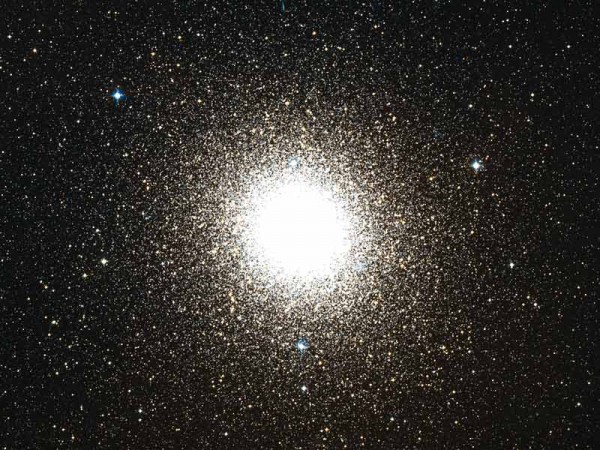The age of our galaxy

With the development of scientific methods and tools, scientists are able to more accurately determine the age of our galaxy and get more data to understand how it developed. This helps them to analyze such celestial objects as globular (ball) clusters. Below, I would like to tell you a little more about these objects and about what conclusions astronomers have reached for the current day.
')
For most people, the age of the Earth is a certain point of reference, the origin of everything. In principle, this is logical. However, from a global point of view, the moment of formation of our planet is just a passing episode. Like the formation of the solar system. Another thing is our galaxy. The unconscious cluster of 200-400 billion stars, not to mention the particulars in the form of planets, comets, black holes and many other objects. All this lives and interacts with each other according to often completely unknown to us laws and principles. Galaxies are often compared with phenomenal living organisms, which transparently hints at phenomenal human pride in relation to ourselves, the "kings of nature." And how long has our galactic "organism" appeared?
Astronomers are trying to answer this question by analyzing the oldest objects of the Milky Way known to us: globular clusters. It is in all senses ancient, fairly dense globular star clusters. In general, our galaxy has the shape of a thin disk with a thickening in the center. At the same time, the disk is surrounded by a kind of halo, a much less dense stellar train.
On the outskirts of the disk and in the halo of the Milky Way there are bright "bunches", which are globular clusters. It is estimated that for each star from globular clusters there are approximately 100 stars forming a halo. Globular clusters, like the halo itself, are considered to be one of the oldest objects in our galaxy, their formation belongs to the times of the youth of the Milky Way. The age of clusters is determined by their total luminescence, but due to the absent-mindedness of “halo stars”, it is very difficult to determine their age.
One of the main tenets of the theory of the evolution of stars is the rule: the more massive the star, the faster it dies. In the halo (and globular clusters) there are many white dwarfs, which are the final stage of the life cycle of many stars. These are exhausted, cooling stars of small mass. According to statistics, their mass is 50-57% of the mass of the sun. The study of white dwarfs allows you to determine the age of specific HA and individual halo zones of the Milky Way. For example, a large cluster called 47 Tucanae (in the constellation Tukana). It is located 15,000 light-years away and is the second brightest cluster after Omega Centauri. Recent studies have shown that the age of 47 Tucanae is about 9.9 billion years (± 700 million).

This is a fairly young cluster whose stars are distinguished by high metallicity (i.e., the content of elements is heavier than hydrogen and helium). The “metal-rich” clusters are mainly located in the disk of the Milky Way, and the “lean” clusters are located in the halo. Such a distribution of two types of globular clusters in volume helps to better understand the mechanism of the formation and development of our galaxy. The difference in age suggests that the disk of the galaxy was formed from a halo after a few billion years. The age of the globular cluster Messier 4 , located in the constellation Scorpio, is about 12.5 billion years. But he is not the oldest. One of the most ancient globular clusters known now in astronomy is about 13.5 billion years old , for example, NGC 6397. What, then, after this, our old Earth, with an age of 4.5 billion years, looks just like a girl.
PS Other articles on space issues:
Black holes
Other planets
Interstellar travel
Source: https://habr.com/ru/post/194642/
All Articles